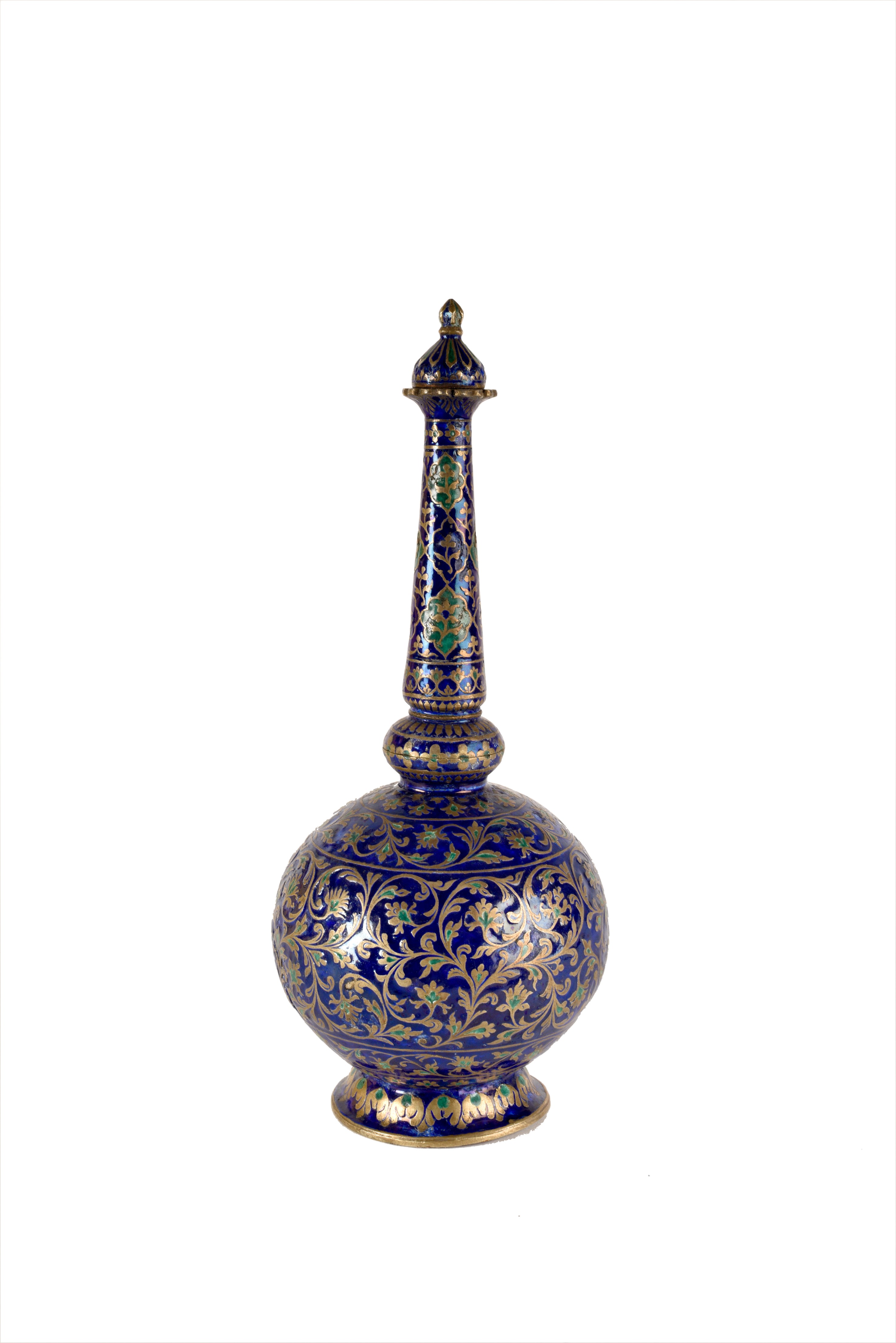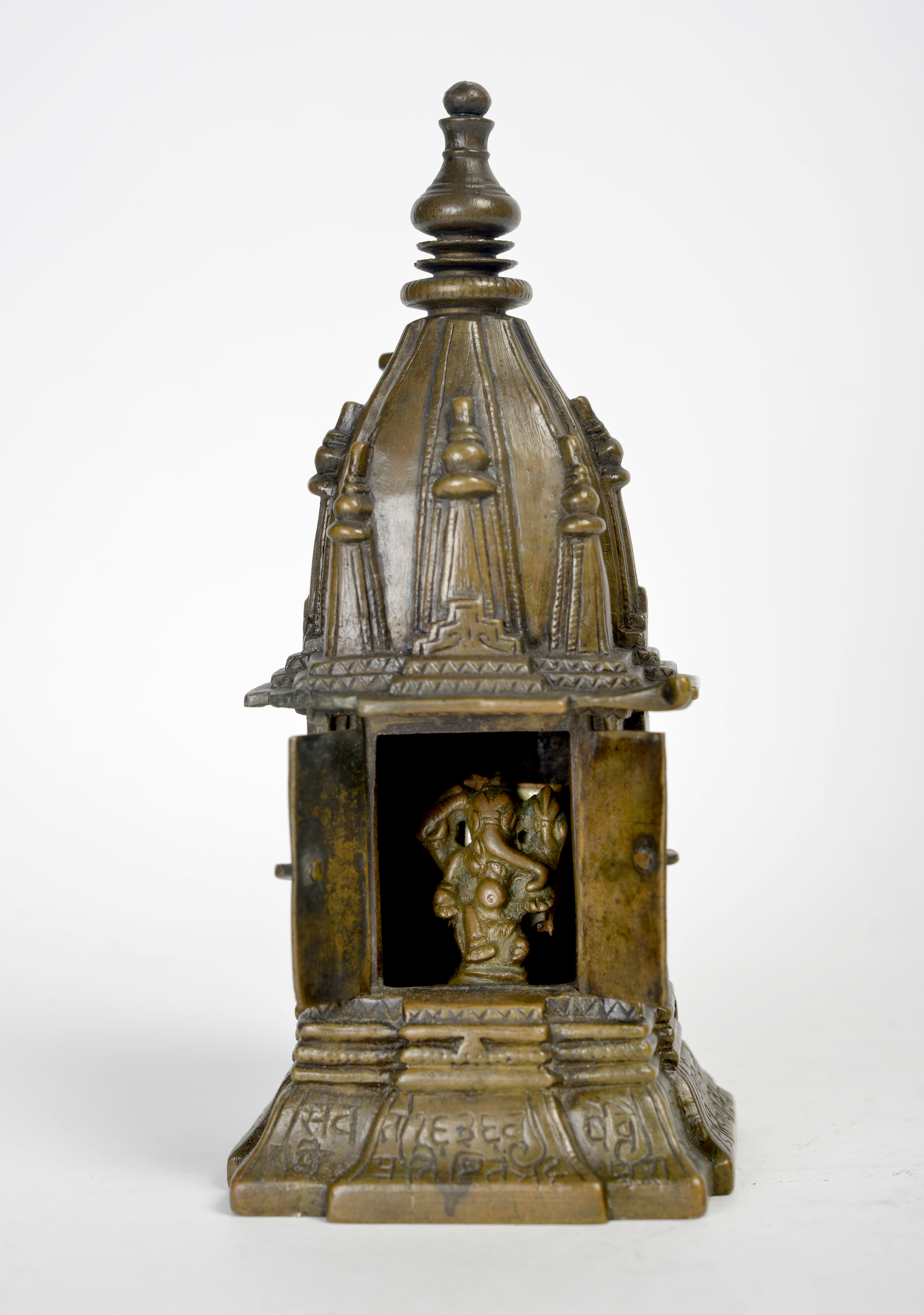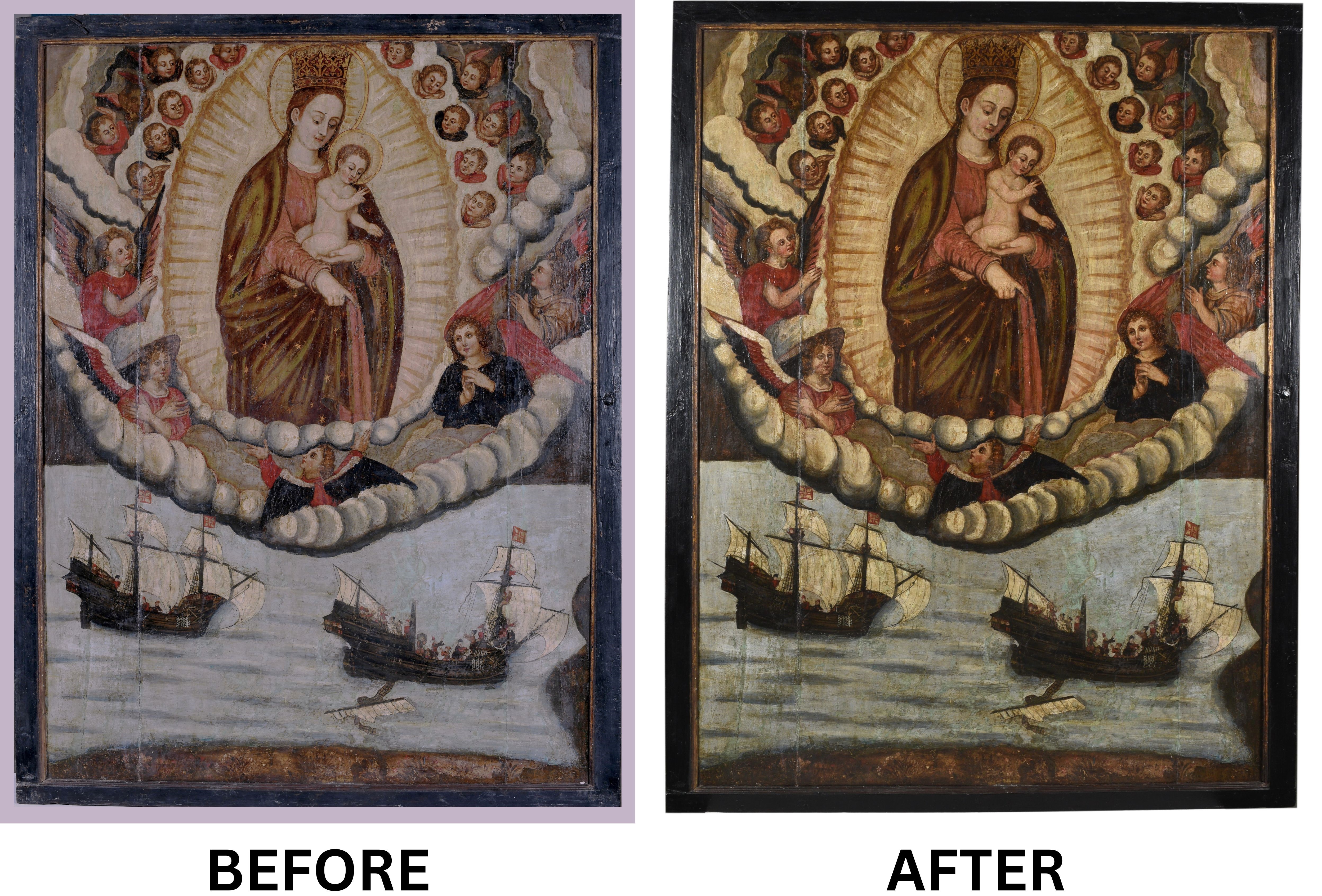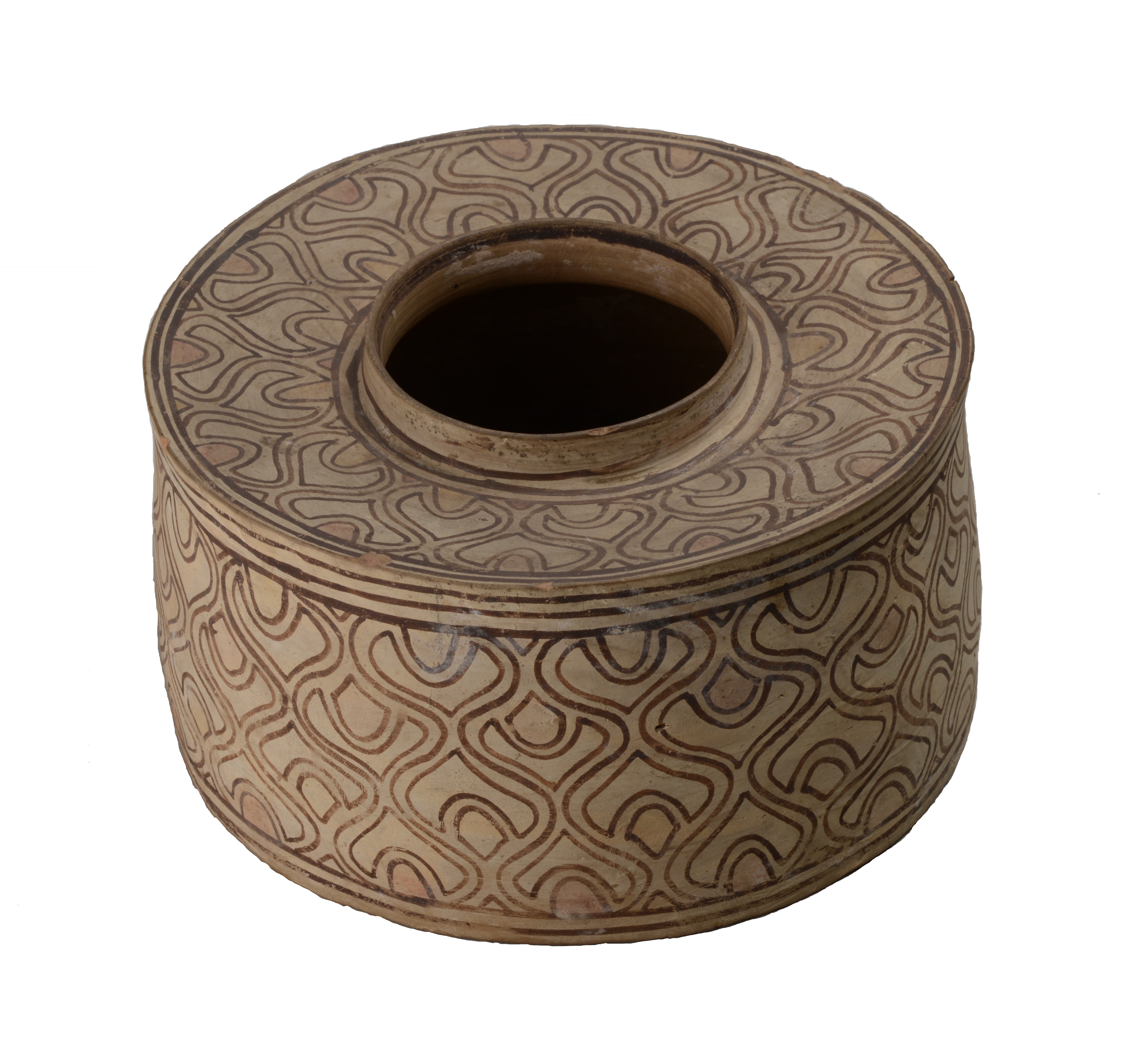
Object Of Month
Current Month
Lakshmi is one of the most celebrated deities in India. Since the early historic times, Lakshmi has been revered as the goddess of prosperity and wealth in the Brahmanical, Buddhist, and Jain traditions. She has been profusely depicted on Temple complexes and Stupa architecture. This miniature gold icon of Chaturbhuja (four-armed) Lakshmi shows her standing on a full-blown lotus. She is shown holding full-blown lotuses in two of her hands, while the other two hands demonstrate the Varad and Abhay mudras. Decked in a saree, she is depicted wearing a crown and other ornaments. The goddess is evoked during the festival of Diwali for perennial opulence.
Nal-o- Daman ( Nala-Damyanti)
Nal-o- Daman ( Nala-Damyanti)
Provenance: Multan, India (Presently Pakistan)
Period: 1116 AH/1705 CE, Mughal
Medium: Ink and watercolour on paper
Language: Persian; Script: Nastaliq
Size: 21.4 x 11 cm
Acc. No.: 88.897
The Mughal era was a golden age for the Persian language in India. Mughal emperors paid attention to Sanskrit due to its historic, cultural and religious significance in the Indian society at that time. Although the work of translation from Sanskrit into Persian had begun much before the sixteenth century, however, it got the right impetus in the Mughal period. The Translation project of Sanskrit texts related to Indian religion and philosophy were undertaken at a large scale, especially under Jalaluddin Mohammad Akbar. The passionate emperor took a keen interest in translation projects and established a translation center at Fatehpur Sikri. Consequently, many seminal Sanskrit texts related to Astrology, Astronomy, Ayurveda, Literature, Philosophy, Vedas, Puranas, and other scriptures were translated during his reign. Many notable scholars of his courts both Hindu and Muslims were involved in this work.
The story of Nala- Damayanti revolves around the King Nal and his beloved Damyanti mentioned in the great Indian epic, Mahbharata. Faizi, an important scholar at Akbar’s imperial court translated the text as Nal-o- Daman (Nala and Damayanti) from Sanskrit into Persian in the of Mathnavi. The language of translation is very lucid and charming which soon became a popular composition of Persian literature. The various copies of this translation are available in different collections around the world.
The present copy from the National Museum collection is one of its kinds. As per the Islamic tradition it begins by praising Allah. This is a non-illustrated copy where calligraphy is done in black ink for main text and the red ink is used to highlight some parts of the text. The text is framed by a red border that adds beauty to the folios. This copy is scribed by Mohammad Aaqil and completed in the month of Zil Hijjah 1116 AH /April 1705 CE in the city of Multan.
Shiva mask
Shiva mask Western/Southern India Date: 19th century Silver Dimension 19 cms. 283 gms. Acc. No.: 60.887
The hollow Shiva head (mask) shows a moustached visage of the god with three eyes. He is depicted with large bulging eyes, elongated earlobes with earrings and a heavy neck ornament. The hair is tied up in a knot or a jata.
Rose water sprinkler (Gulabpash)
Rose water sprinkler (Gulabpash)
Lucknow, Uttar Pradesh; 18th century
Silver, enamelled
Ht. 27.5; Dia. base: 3.2; Cir.: 36 cm.
Accession Number: 91.12
The term ‘gulabpash’ refers to ‘rose water sprinkler’. Soft sweet fragrance of rose flower had attracted the royals and nobles to use it in a number of ways, besides rose flower garland. In South Asia and the Middle East, the gulabpash is the most widely used vessel, which was used for sprinkling rose water during the royal courtly etiquette, social customs and ritualistic ceremonies like water scented with roses was liberally strewn over guests upon arrival and before or after a meal; or it was used to sprinkle rose water or other scented liquids onto the hands of guests or was used to perfume a room. Usually gulabpash has a globular body, long elongated necks and perforated tip. For making these vessels different materials were used; most examples were made in glass, and a few in precious metal like silver or gold, which were decorated according to the stature of the user. This silver and gilded enamelled gulabpash has a bulbous body for storing rose water, a little circular base and a long neck. This gulabpash exactly follows the of thinly-blown Indian or Near Eastern glass sprinklers. The constrictions in the neck are intended to limit the amount of liquid that can be sprinkled, and to fine droplets rather than a stream. The beautiful gulabpash is decorated with enamelling in blue and green colour. The artistically carved leafy scrollwork pattern covers the entire body on the Persian blue enamelled surface. Foliage design is on the shoulder of the sprinkler and it has beautiful leaf patterned on narrow base. It is a beautiful example of late 18th century enamel work of the Lucknow centre of North India.
This is a Snider-Enfield rifle. The barrel of the rifle is secured to the wooden gunstock with the help of steel barrel bands. The ramrod is attached underneath the barrel. It was an Enfield muzzle-loading rifle that was converted into a breech-loader. The breech block of the rifle contains a diagonally downward-sloping firing pin. The firing pin was struck with a lock-mounted hammer. To load the rifle, first, the hammer was cocked, and then the hinged block was flipped open out of the receiver by grasping the lever. The used cartridge case inside was extracted by pulling the block back. The rifle has an adjustable sight near the breech end, and it also has a slot to fix the bayonet near the muzzle of the barrel.
Miniature temple
Miniature temple
Northern India
16th century C.E
Bronze, Ht. 15.2 cm, Wid. 7.7 cm
Acc.No: 48.4/143
A miniature temple containing the four-armed figure of Ganesha. The temple is of northern and has an elevated tiered base, square on plan, with recessed corners. The garbha-griha (sanctum) has a pair of door leaves on one side and geometric perforation in jali pattern on two sides. The terraced base of the curvilinear top has a projection at each corner for hanging the bells. The sikhara is surmounted by a ribbed disc (amalaka) and a tapering kalasa, and is superimposed by miniature models of the shrine itself on the eight directions. There is a small projected groove below the disc for holding the dhvaja-stambha. The base all around bears an inscription in Devanagari script. The four-armed Ganesha is shown seated in an easy posture on a rectangular pedestal. His right leg is raised and bent at knee, the left being tucked in front. In the rear right hand he holds the tusk, in the front right modaka, and in the near left the trident. On the front left hand he rests the tip of the proboscis. He is crowned and wears bracelets, anklets etc.
Vajrayogini Mandala
Vajrayogini Mandala 19th-20th Century Ladakh Wood, Copper Alloy Size: 24.6 cm. Acc. No.64.14/A-B
A set of two mandalas dedicated to Vajrayogini, venerating the mother of all Buddhas in Anuttarayoga Tantra. She is depicted as red with a willowy figure and a wrathful visage. She stands in alidha asana while she holds a skull cup and a kartika in her left and right hands. She is also associated with Siddha Naropa as his yogini. Mandalas are an essential aspect of Buddhist worship and ritual practices. Mandala houses the essence of the deity enclosed within a sacred enclosure. She stands inside a red hexagram surrounded by eight great charnel grounds. The outer rim of the mandala is decorated with vajra motifs. The wooden plaque depicts the deity, and the copper plaque represents the seed syllable of Vajrayogini.
Virgin and Child, also known as Madonna and Child or Virgin Mary and Child, is a representation of the Virgin Mary holding the infant Jesus. In this painting, Virgin Mary is seen holding an infant (Jesus) who raises his hand in benediction towards the viewer. Both of them have a halo over their heads and are surrounded by angels. The painting contained some problems like Dust and Dirt, Flaking, Loss of Varnish in some Places, Paint Stains at some places, Bulging in some places and long cracks in the Painting due to gap in Wooden panels on both Left Hand Side and Right Hand Side. The basic conservation treatment was given to the painting by National Museum Conservation Laboratory and the painting is in Display in PCWA gallery at present.
Polychrome Container
Title Polychrome Container Accession Number GP.G.5/952 Museum Name National Museum, New Delhi Gallery Name Pre-History Object Type Pre-History Main Material Terracotta Origin Place Nal Period / Year of Work Harappan Dimensions Ht-9.52cm
Polychrome container with flat wide base and cylindrical body and a small mouth, has intricate design ed by the placing of closely spaced motifs at regular intervals.
Vak-Devi, the Goddess of Speech and Learning, displaying her omni manifestation (viratasvarupa)
Artist: Unknown, Rajasthan,
Date: 19th century, Medium: Gouache on paper
Dimensions: 290 x 210 mm (11 x 8 in)
Acc. No.: 82.489
Vak-Devi, the Goddess of Speech, occupies a pre-eminent place in the Tantric pantheon. Her head reaches above the clouds; her feet are firmly planted on the earth. The central axis of the goddess’s body is dotted with diminutive figures of Brahma, Vishnu and Shiva. Goddess Sarasvati presides over her tongue. These, along with figures of sages and ascetics painted on parts of her omnipotent body proclaim her supremacy over all. Known as Varneshvari, Empress of Letters, or Varnajanani, Mother of Letters, she is the source of articulated speech and the energetic force of alphabets as nuclear sound-syllables (bija-mantras) invoked in Tantric rituals.


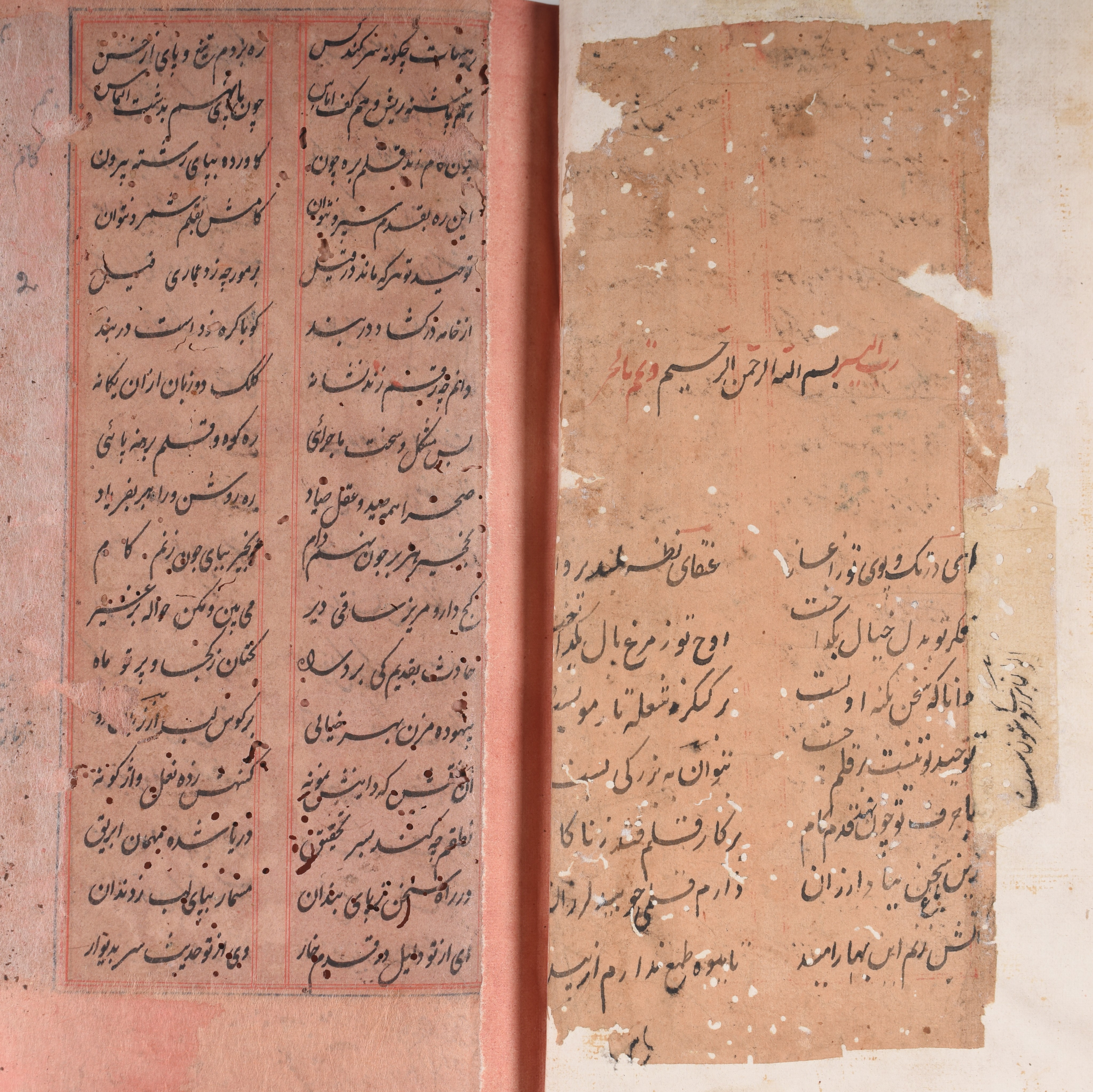
.jpg)
